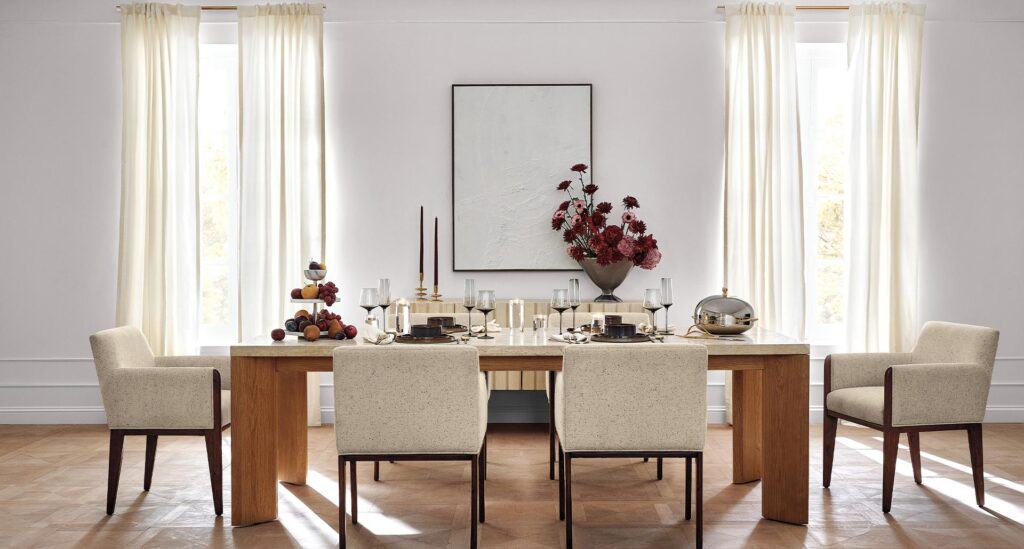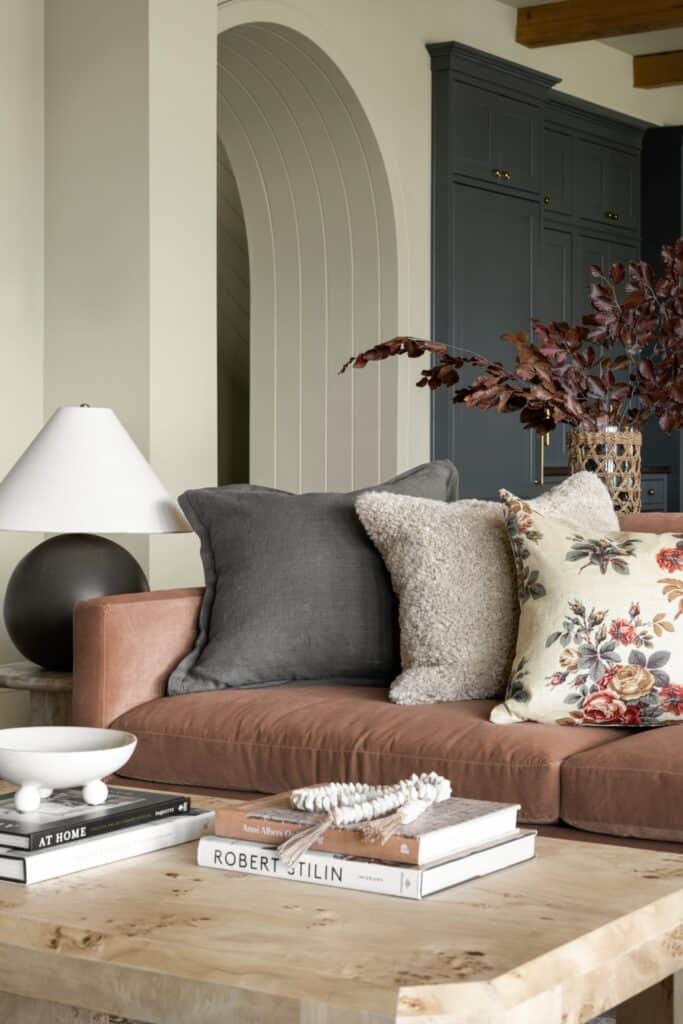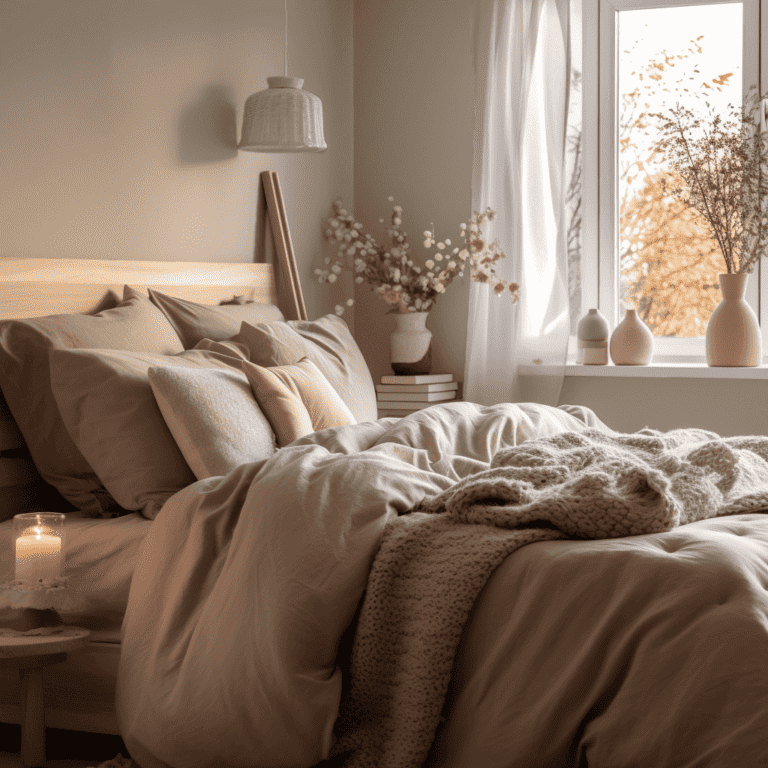How To Perfect Layering In Interior Design: 5 Ways To Add Dimension To Your Home
Create a cosy and inviting space with the power of layering.

Have you ever experienced the magic of transforming a bland dish into a culinary masterpiece with just the right blend of spices? Well, it’s no different when it comes to layering in interior design. By skillfully combining textures and elements, you can turn a dull space into a visual feast fit for a magazine spread through the art of layering in interior design.
What is Layering in Interior Design?
Layering in interior design is the art of strategically combining various textures, colours, patterns, and decorative elements to create depth, dimension, and visual interest within a living space. It’s the secret sauce that transforms a room from ordinary to extraordinary, making it a reflection of your unique personality and style.
In essence, it’s about blending different design elements harmoniously, just like a chef skillfully combines diverse flavours to create a delightful culinary masterpiece.
Reasons You Need to Know Layering in Interior Design
- Intentional Design: Layering makes your space look intentional and designed, transforming it from a random collection of furniture and decor into a cohesive, visually appealing whole.
- Express Your Unique Style: Layering allows you to infuse your personality and taste into your living space. From travel mementoes to family heirlooms, layering allows you to narrate your journey through the things you love.
- Luxurious Ambiance: It creates a sense of luxury in your space, infusing sophistication, warmth, and style, all achieved through the artful combination of textures, colours, and patterns.
Step-by-Step Instructions for Perfect Layering in Interior Design
01.
Gather Your Inspiration Arsenal: The Treasure Hunt
Creating a guideline through inspirational images, colour palettes, or design ideas makes the process a lot easier. Having a guideline allows you to figure out which interior design style or styles you like, helps you stay on track, and not get confused or overwhelmed during the process. It’s like plotting a course for your design adventure, and in this section, we’ll explore how to execute this essential first step with finesse.
Step 1: Cast Your Net Wide
Start by exploring various sources of inspiration. Dive into design magazines, scroll through Pinterest, and follow interior design blogs. Don’t limit yourself; allow your imagination to roam freely.
Step 2: Create an ‘Inspiration Hub’
Whether it’s a physical vision board or a digital collection, create a designated space to store your findings. This could be a corkboard with magazine clippings, a Pinterest board, or a folder on your computer.
Step 3: Be Mindful of Themes
As you collect images and ideas, pay attention to recurring themes or elements that catch your eye. Is it a particular colour palette, a style of furniture, or a specific vibe? These are the building blocks of your personalized design.
Step 4: Analyze Your ‘Treasure Map’
Take time to review your inspiration hub regularly. What patterns emerge? What are the common threads that tie your favourite design elements together? This analysis will guide your next steps.


02.
Colour Chronicles: Choosing The Right Colour Palette
Colour plays an important role in any space. It’s crucial to maintain a unified colour palette to avoid a crowded, unbalanced, or confusing feel to your space. Your carefully chosen colours will work in harmony, creating a layered, visually engaging environment that tells your unique story.
Step 1: Define Your Interior Style
Begin by identifying your preferred interior design style. Are you drawn to the elegance of minimalism with subtle, neutral tones, or do you crave the eclectic vibes of a mixed style? Understanding your style sets the stage for your colour choices.
Step 2: Select a Colour Palette
A well-crafted colour palette typically consists of no more than five colours. Keep it harmonious and cohesive. Less can indeed be more when it comes to colours.
Step 3: Primary and Secondary Colors
Decide which colour will play the leading role in your space (your primary colour), including walls, ceiling, and trim colours. Take the colour of the floor and built-in furniture into consideration and incorporate them into your colour scheme. Use your secondary colours for statement furniture or decor.
03.
Texture Tango and Pattern Play
Texture and patterns bring movement and expression to any space. When adding texture and patterns to your space, think about the room as a whole. How this pattern will interact with the other elements of the room is the most important question to ask yourself. Mixing different patterns might seem tricky, but if you understand how shapes, sizes, and colours work together, it becomes easier.
Step 1: Pattern Fundamentals
When adding patterns to a room, think about their size and style. If you have a big, bold pattern, mix in some smaller-scale patterns and solid colours. For instance, if you pick a large floral pattern, use stripes or other small patterns in different places. If you pick a plaid or linear wallpaper, avoid using linear textiles and instead, go for organic patterns and textures in your layers. Mixing patterns can give your room a classic or eclectic vibe. The key is to have a variety of patterns while keeping the colours cohesive. This prevents the room from feeling cluttered or unbalanced.
Step 2: Truth About Texture
Even if it’s just one colour, materials with texture can be thought of as a pattern in room design. This is especially true in elegant or minimalistic spaces where the focus is on the texture of solid fabrics or natural materials in furniture, like a cosy bouclé chair or a natural travertine table. Using techniques like limewash or Roman plaster can create subtle textured walls, adding another layer of depth and character to your space. Textures work like a subtle form of patterns, providing a background for detailed or bold designs that can fit a range of styles anywhere from traditional to eclectic.
Step 3: Wonderful Wallpapers
When thinking about adding patterns to your walls, it’s a great place to be bold and use large-scale designs. Patterned wallpaper can give your space an eclectic style with a mix of patterns. To balance this, keep other materials like lighting and furniture more subtle. On the other hand, if you go for a neutral or simple wallpaper, you can add more patterns with textiles and still achieve that eclectic look.
Step 4: Where To Start?
Patterns give you the freedom to make your space unique and create different styles. So, where to begin? Start with something you really love, like a floral pillow, a textured coffee table, or a bold wallpaper. From there, you can build the room’s look by choosing other patterns that go well with your starting piece. Whether you’re going big with something like wallpaper or just mixing and matching pillows on a plain sofa, these tips and tricks will help you get started in the right direction. Take a look at Studio McGee’s designs, they really know how to work those patterns.

04.
Decorative Elements Deconstructed: Adding That Final Touch
Decorative elements are the finishing strokes that bring life to your layered space, allowing you to make it truly your own and tell your unique story. There are various ways to add layers through decoration:
1: Artwork on Walls
Hanging artwork on your walls is a powerful way to add character. Choose pieces that resonate with your style and the room’s colour palette. You can mix various sizes and types for a gallery wall or stick to one size for a more minimal look. Use shelves with hanging plants for more depth and dimension.
2: Scatters and Throws
Scatter cushions and throws on your seating provide a pop of colour, pattern, and comfort. Mix and match these textiles to enhance the overall look, combining different textures and colours. A faux fur throw or a chunky merino wool throw will add softness and texture to any space. Take a look at the pattern and texture fundamentals again on how to combine them.
3: Accessories and Plants
Decorative accessories, such as vases, sculptures, or your favourite coffee table book, add personality to your space. Incorporate indoor plants to bring a touch of nature. If you’re not confident in your plant care abilities, consider faux plants as an alternative. These elements breathe life and depth into your design.

4: Rugs
Rugs anchor a room and serve as a foundation for layering. Choose one that complements your colour palette and adds texture or pattern to the floor. Layer smaller rugs over larger ones for added depth. Remember to use the right size rug for the space.
5: Lighting
Lighting fixtures provide both functional illumination and a decorative touch. Mixing various types of lighting creates a layered effect.
There is a whole range of lighting sources available; pendant lights, recessed lights, chandeliers, track lighting, tall floor lamps, small table lamps, wall sconces, under cabinet lighting, and other spot lighting. Don’t forget dimmer switches to set the tone and atmosphere for each space.
PRO TIP:
The Rule of Three is a reliable guideline in interior design. Odd numbers of items tend to be more visually appealing than even numbers, and three is often the perfect choice.
6: Window Treatments
Window treatments, whether it’s curtains, blinds, or shades, serve a functional and decorative purpose. Soft, linen sheers give your space an airy and light ambience, providing a gentle backdrop for other focal elements. On the other hand, bold patterned curtains add drama and can serve as a striking focal point in the room.
Layering through decorative elements is your chance to add those personal touches that truly make your space one of a kind. By carefully considering and harmonizing these elements, you create a beautifully layered room that tells your story.

05.
Curating and Editing: Where To Start?
Now that you know all the key elements, where do you start?
Balancing the art of curating and editing in your interior design ensures that every element in your space serves a purpose and contributes to the overall harmony. By carefully considering what to keep, what to remove, and how to arrange your elements, you create a space that is not only beautiful but also functional and reflective of your personal taste.
Step 1: Assess Your Space
Begin by assessing your room. Take a look at all the elements in your design, from furniture and decorative pieces to textiles and colours. Identify what’s working and what may be overwhelming or underrepresented.
Step 2: Identify Focal Points
Determine the focal points of your space. These are the key areas or elements that should draw the most attention. It could be a beautiful piece of artwork, a statement piece of furniture like an interesting egg chair, or a stunning window with a view.
Step 3: Eliminate the Unnecessary
Editing is just as important as curating. Remove items or elements that do not contribute to the overall design or that create clutter. The goal is to create breathing space and highlight your chosen focal points. Organize and arrange items so that each one has a designated spot.
Step 4: Create a Visual Flow
Ensure there’s a visual flow in your space. The arrangement of furniture, colours, and decorative elements should guide the eye seamlessly through the room. Pay attention to traffic patterns and how you move within the space.
Step 5: Maintain Consistency
Stick to your chosen colour palette, patterns, and styles. This consistency ties the various elements together and creates a cohesive and balanced look.

Key Considerations for Successfully Layering in Interior Design
Layering in interior design is an art that goes beyond just following steps and guidelines. It’s about creating a space that reflects your unique personality and style. Here are some key insights to keep in mind as you embark on your interior design journey:
Balance is Key: While layering adds depth and interest to a space, striking the right balance is crucial. Avoid overloading your room with too many elements or colours. Instead, focus on creating harmony by carefully curating and editing your choices.
Embrace Your Personal Story: Layering is not just about following trends; it’s a chance to tell your story. Infuse your space with items that have personal meaning, whether it’s a family heirloom, a souvenir from your travels, or artwork that resonates with you. These personal touches make your space truly unique.
Flexibility in Style: Don’t feel confined to a single style. Layering allows you to blend different design elements and create an eclectic and personalized look. Mix and match styles, colours, and patterns to achieve a space that feels authentically you.
That’s a wrap (with lots of layers)
In the world of interior design, there are no rigid rules, only endless opportunities to express your creativity. So, I invite you to embrace this art, trust your instincts, and let your imagination run wild. Layer, experiment, and make your space a true reflection of who you are. Your journey into layering has only just begun, and I can’t wait to see the stunning spaces you’ll create.

Deidré Barnard
Deidré Barnard is a qualified and practicing interior designer who absolutely loves every aspect of her job and specializes in 3D Visualization. Deidré believes that interior design and decorating should be demystified and accessible to everyone. She shares daily doses of home decor, inspiration, and interior styling tips that will inspire you to take on your own design projects with confidence.
What do you Think?
A penny for your thoughts?



















